( History ): I had a Dino outbreak a few months ago and is now completely eradicated  . Pods, phyto, MB7 & MB Clean alternating days, along with dosing sodium silicate to get a diatom bloom did the trick along with a top 1/4" sand removal from my 1" sand bed. Diatoms are now gone so I wanted to put my clean sterilized sand back in the tank.
. Pods, phyto, MB7 & MB Clean alternating days, along with dosing sodium silicate to get a diatom bloom did the trick along with a top 1/4" sand removal from my 1" sand bed. Diatoms are now gone so I wanted to put my clean sterilized sand back in the tank.
One thing I have always had with my tank is that some areas of the sand is calcified. With my light spectrum, the sand always showed some brown and purple specks on the sand. The purple I assumed was Coraline Algae and the brown I was never sure what it was but it does not blow off and does not come off with a tooth brush so really never paid much attention to it.
So today I decided to run all white light in the tank to inspect to make sure all the dyno was gone and it is but to my surprise what I thought was brown is actually green. It does not blow off and will not come off with a brush. The rock is even green along with some Purple Coraline. Nothing shows up under a scope except for sand crystals. Where the green appears darker is where the sand is calcified.
Is this Green Coraline or something else?
20K light spectrum photos
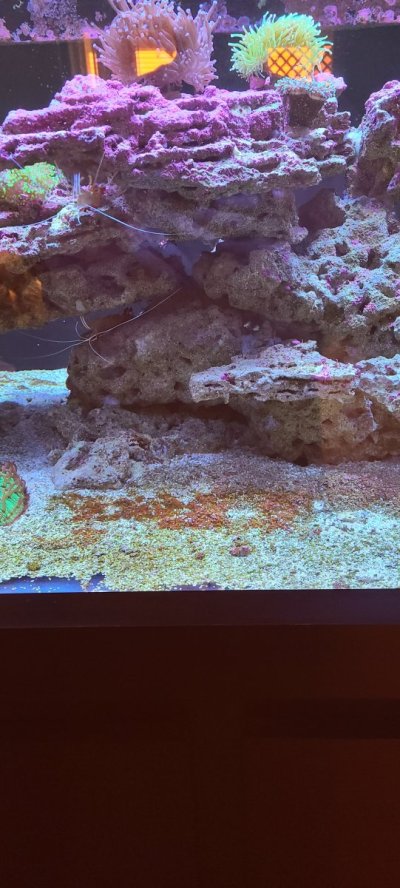
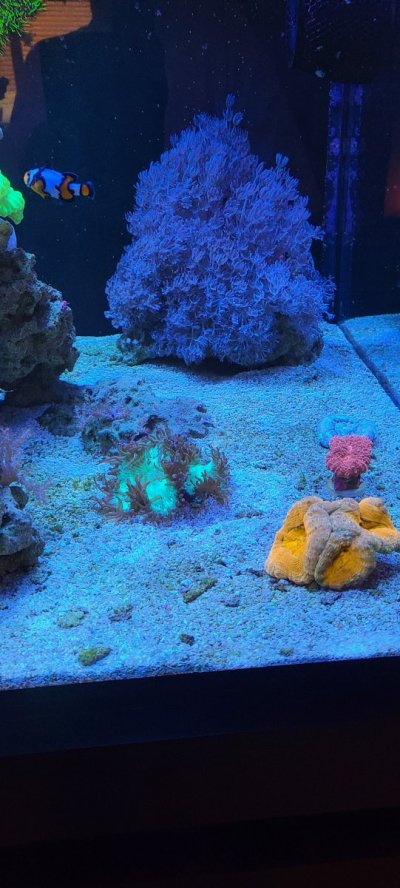
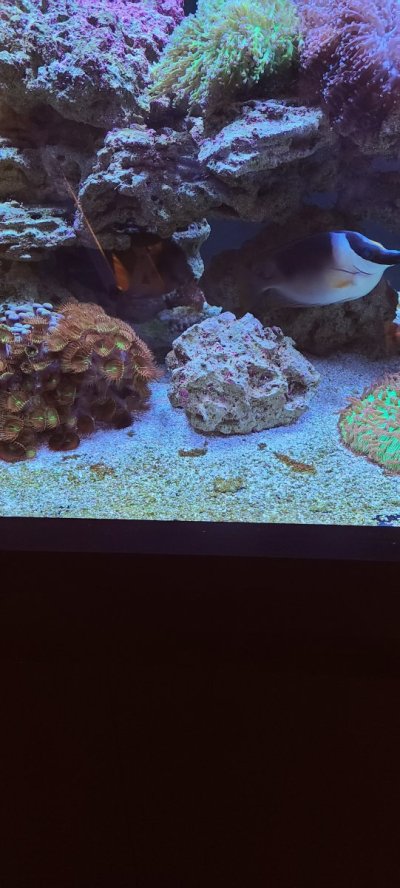
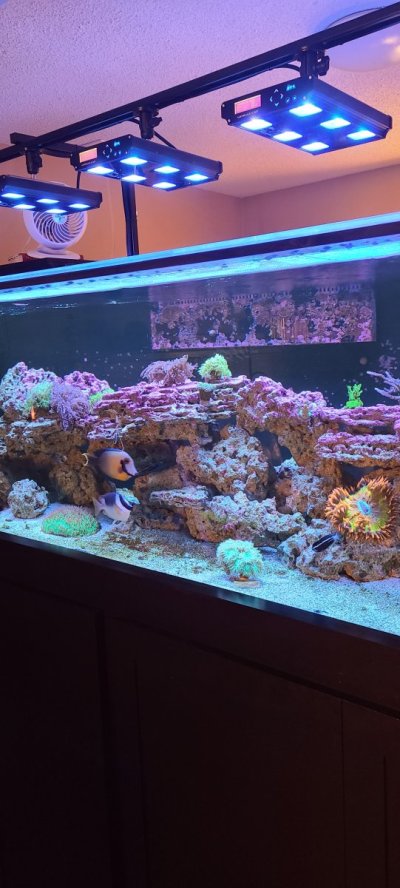
All white light photos. Magnificent Foxface does not like the white light
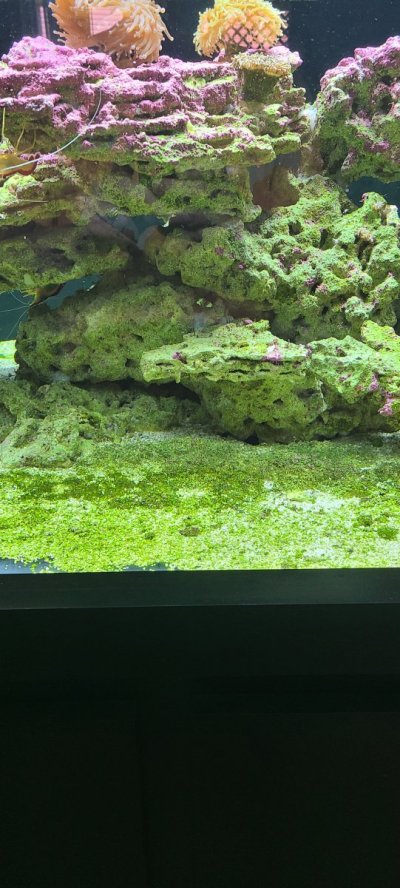
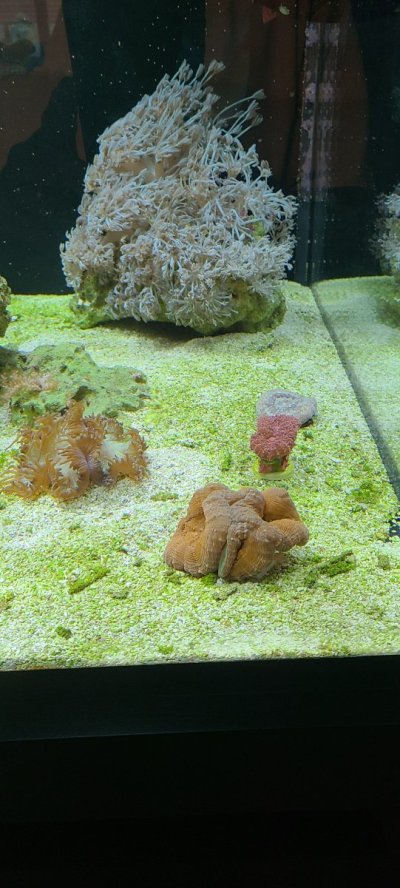
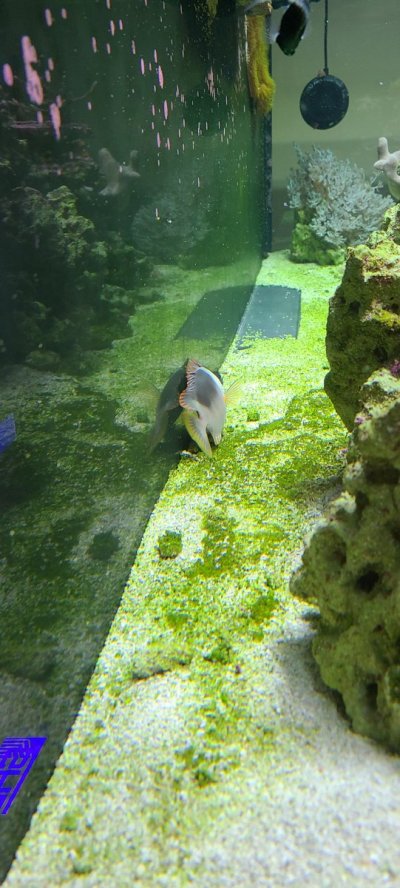
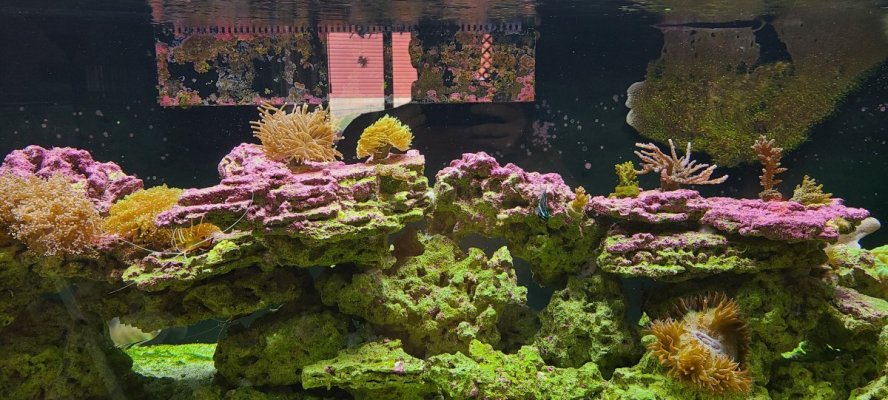
One thing I have always had with my tank is that some areas of the sand is calcified. With my light spectrum, the sand always showed some brown and purple specks on the sand. The purple I assumed was Coraline Algae and the brown I was never sure what it was but it does not blow off and does not come off with a tooth brush so really never paid much attention to it.
So today I decided to run all white light in the tank to inspect to make sure all the dyno was gone and it is but to my surprise what I thought was brown is actually green. It does not blow off and will not come off with a brush. The rock is even green along with some Purple Coraline. Nothing shows up under a scope except for sand crystals. Where the green appears darker is where the sand is calcified.
Is this Green Coraline or something else?
20K light spectrum photos




All white light photos. Magnificent Foxface does not like the white light



















